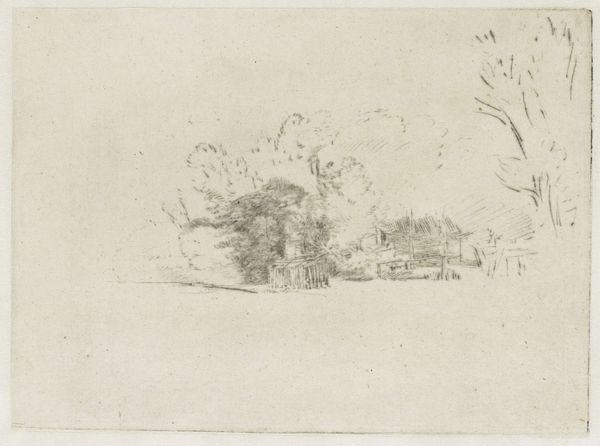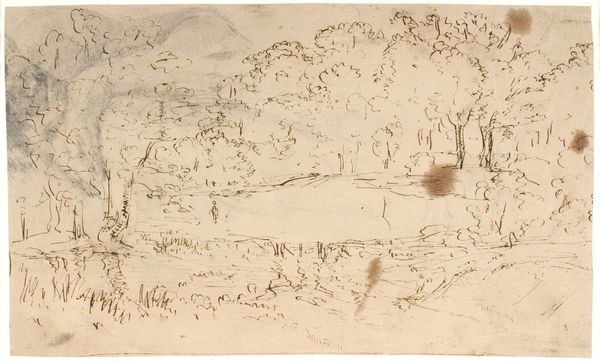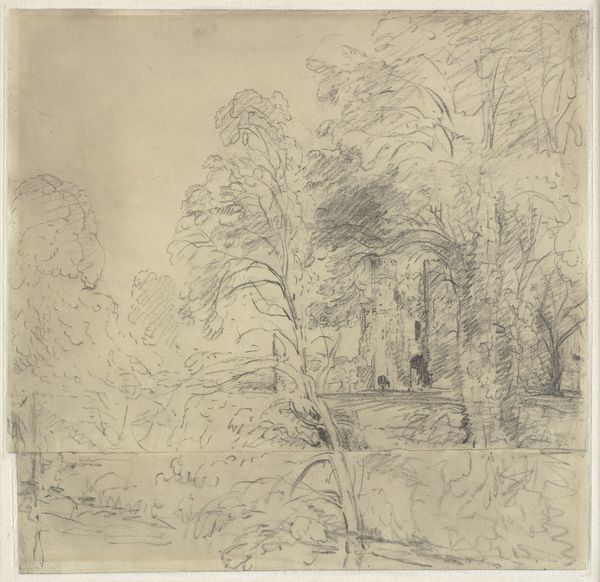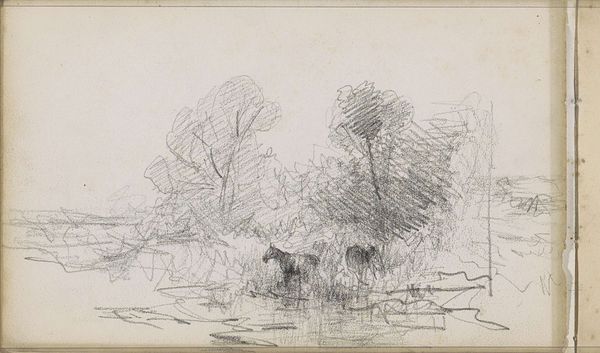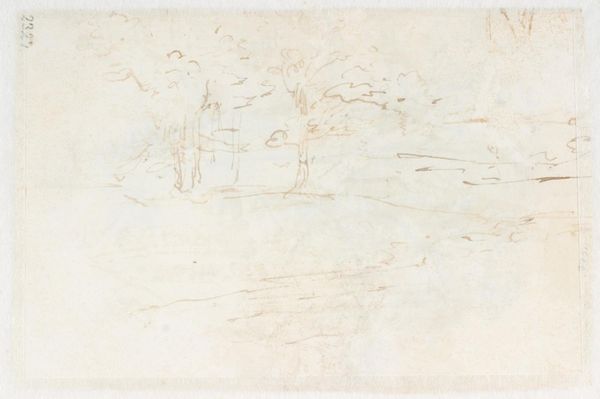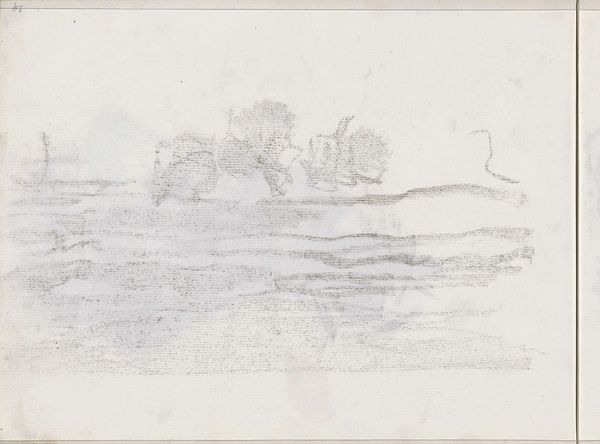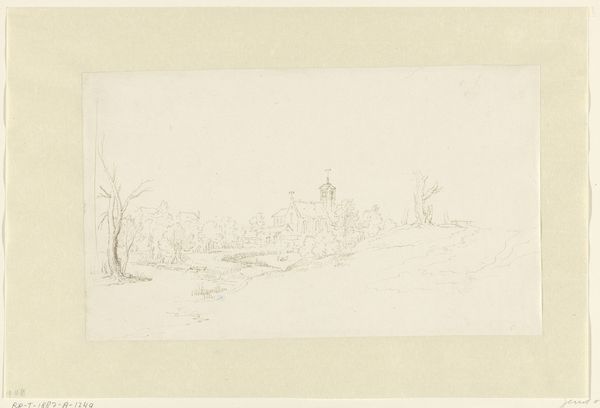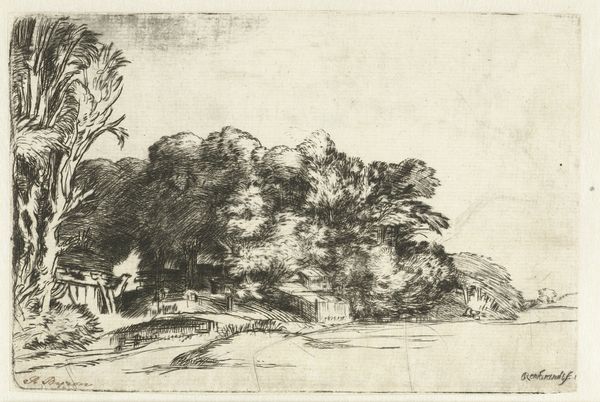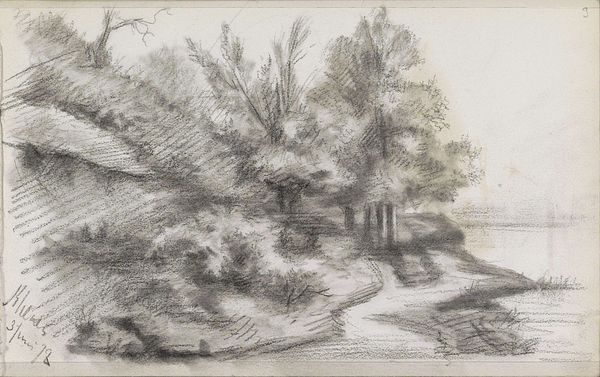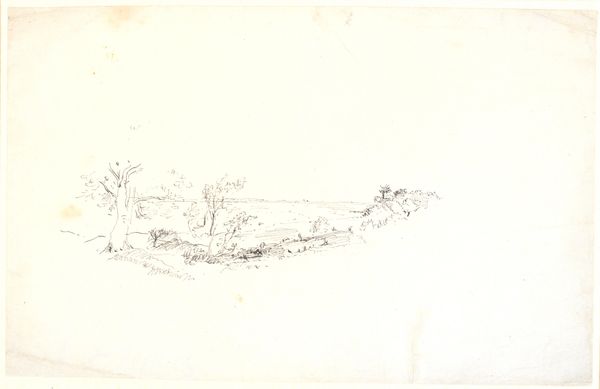
drawing, print, etching
#
drawing
#
dutch-golden-age
# print
#
etching
#
landscape
#
charcoal drawing
#
charcoal art
#
underpainting
Dimensions: height 148 mm, width 212 mm
Copyright: Rijks Museum: Open Domain
Editor: We're looking at "Farmhouse among Trees" by Rembrandt van Rijn, created in 1652. It's an etching, and the impression is so delicate, almost ghostly. It feels like a fleeting glimpse of rural life. What do you see in this piece, especially considering the time it was made? Curator: Well, seeing this work through a historical lens, it’s important to recognize the rise of the Dutch Republic during this period. This etching participates in constructing a specific image of the Dutch landscape. Does this image reinforce or challenge contemporary notions of Dutch identity and prosperity? Editor: That's a really interesting point. I hadn’t thought about it in terms of national identity. Is Rembrandt romanticizing the countryside, perhaps idealizing rural life in contrast to the booming urban centers? Curator: Precisely. Etchings like this were sold as prints, a commodity that circulated widely, helping disseminate these constructed images. How do you think accessibility to art influences social perceptions? Editor: It's interesting to think about who could afford these prints and what message they took away from them. I suppose an urban merchant might have seen this farmhouse as representing the idealized simplicity of a life he'd never experience. Curator: And what role do museums, like the Rijksmuseum where this is currently held, play in shaping our understanding of this work today? Does its presence here elevate the scene? Editor: Absolutely. Being in the Rijksmuseum definitely frames it as a significant piece of Dutch cultural history. Thinking about its role then versus its role now is fascinating. Curator: Indeed. This exercise reminds us that art doesn't exist in a vacuum; its meaning shifts and accrues depending on its socio-political context and its reception by various audiences throughout history. Editor: I never really thought about landscapes as being political. This has completely changed how I will look at art from now on. Thank you!
Comments
rijksmuseum about 2 years ago
⋮
With the needle Rembrandt scratched powerful incisions directly on the copper plate; these bold lines underscore the tall tree at the left. He used less force for the trees surrounding the cottage and the vista at the right. This sketchiness recalls the style he used when drawing in nature. Rembrandt would translate such a sketch done out of doors into a print.
Join the conversation
Join millions of artists and users on Artera today and experience the ultimate creative platform.
